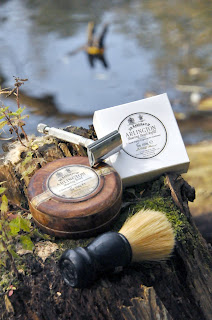Iedereen is
ontroerd door de beelden van Australië die ons via de media bereiken. Ik ook,
maar wat mij het meest schokt, zijn niet de rode beelden van die vuurzee, het
is niet die kangoeroe die tracht te ontkomen, of de walibi die aan de
prikkeldraad gegrild is. Het is niet het schattige koalabeertje dat van een
flesje drinkt en daarbij de hand vasthoudt van de man die het hem geeft. Wat
mij het meest schokt is de totale afwezigheid van het besef dat wij allemaal
medeplichtig zijn! Medeplichtig aan het in brand steken van het huis waar we
allemaal in wonen.
Ik weiger te
geloven dat de opwarming van de aarde een probleem is dat veroorzaakt en gehandhaafd
wordt door enkele rijke industriëlen en dat enkel zij hier verandering in kunnen
brengen. Aan het begin van elk productieproces staat een consument met een vraag.
Aan het einde van de leveringsketen staat een consument met een creditcard. En
ja, met consument bedoel ik jou en mij. Als wij niet meer zouden kopen, of
minstens duurzamer zouden kopen, dan zouden producenten ook niet meer produceren.
Wat niet meer verkocht wordt, zal niet meer geproduceerd worden! Dit ontkennen
is iets te gemakkelijk. Het is niet aan die industriëlen om ons te vertellen
wat wij nodig hebben.
Om dezelfde
reden weiger ik te geloven dat dit iets is wat enkel door politici kan worden
opgelost. Dat is ook iets te gemakkelijk. Je moet niet wachten tot er een
verbod komt op plastic zakjes of dieselmotoren, of tot om het even wat onze
planeet langzaam (of in sneltempo) aan het vernietigen is. Je kunt zelf
beslissen om iets niet langer te gebruiken. Politici zijn vaak ook maar marionetten
van ….tja…. en de meesten onder hen zijn toch alleen maar bezig met het vullen
van hun eigen zakken, of het verzekeren van de volgende verkiezingszege.
Ook het argument
dat vervuiling – en massaconsumptie in het algemeen – niets te maken heeft met
de opwarming van de aarde is niet waar. Heb je jezelf ooit afgevraagd wat de
echte kostprijs is van goedkope kleding, of die online bestelling uit China van
dat gadget dat je denkt “nodig” te hebben? Begrijp jij je emissies als je op
een zondagochtend in de wagen stapt om die vier croissants te gaan halen bij de
bakker? Begrijp jij het ecologische prijskaartje van de plastiekverpakking van
die fancy gezonde lunch die bij jou aan de deur wordt geleverd? De meesten
onder ons niet.
Ook het argument
dat de beslissing van één persoon om anders te gaan leven de wereld niet zal
veranderen is te gemakkelijk. Elke massabeweging begint bij één individu …. Kijk
maar naar Greta!
We leven
allemaal ver boven onze natuurlijke stand en ja, ook Mick en ikzelf. Er is nog
veel ruimte voor verbetering, maar we zijn enkele jaren geleden tot het besef
gekomen dat we onze levensstijl drastisch moeten veranderen. We worden om die
reden vaak bekeken als het geitenwollensokkenkoppel, we worden vaak bestempeld
als te naïef als we denken dat we hiermee de planeet zullen redden.
Ik heb geen
kinderen. Ik moet me dus geen zorgen maken over hun toekomst. En ik woon in een
stad met een laag risico in een rijk land met een laag risico. Ik zou het
allemaal aan me voorbij kunnen laten gaan. Maar dat kan ik niet.
Wat er allemaal
aan het gebeuren is rondom ons, niet alleen in Australië, maar ook in Jakarta, het
Amazonewoud, het Verenigd Koninkrijk, de VS, Mozambique … heeft ons gesterkt in
de overtuiging dat wat we doen de enige weg vooruit is, maar het moet nog veel beter
...
Dus neen, ik bid
niet mee voor Australië. Mijn gesprekken met God hebben nog nooit ergens iemand
vooruit geholpen.
Bewustmaking met
deze blogpost zal mijn bijdrage zijn. Het brengt Australië vandaag geen
soelaas, maar misschien morgen wel. Want morgen gebeurt dit opnieuw, en op een
dag zal het ook aan ons zijn … En dat zal sneller gebeuren dan je denkt.
Je mag delen als
dit belangrijk vindt…
Foto: Mieke
Richart
















